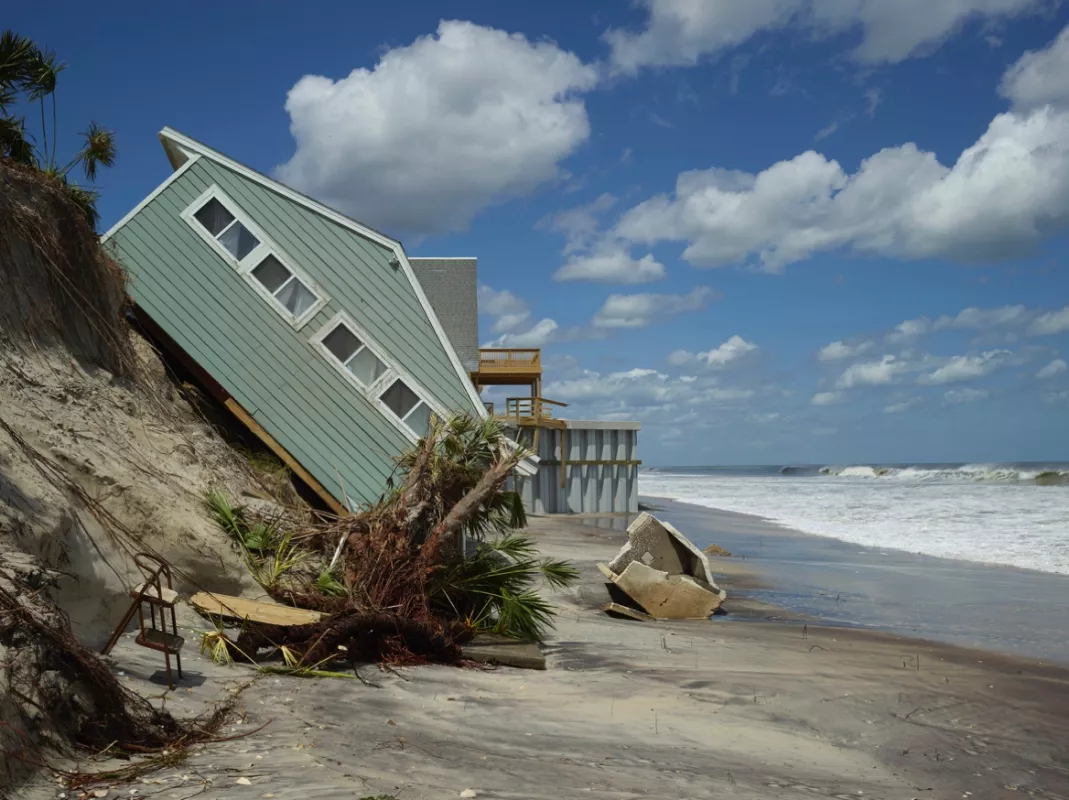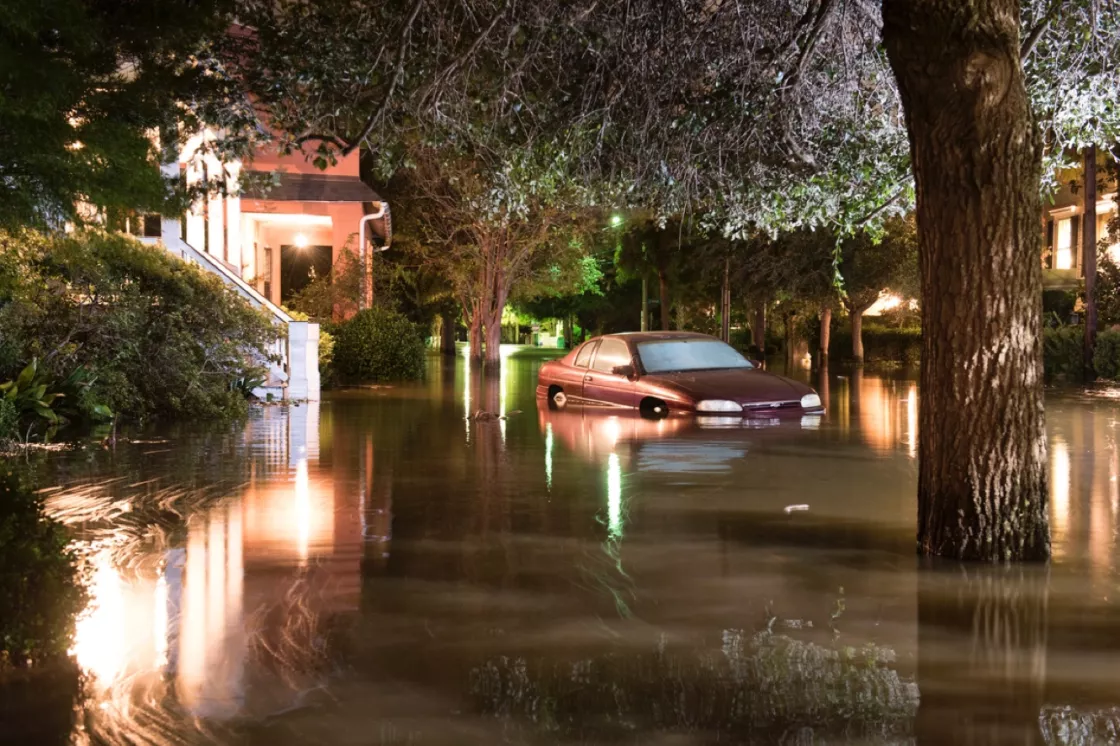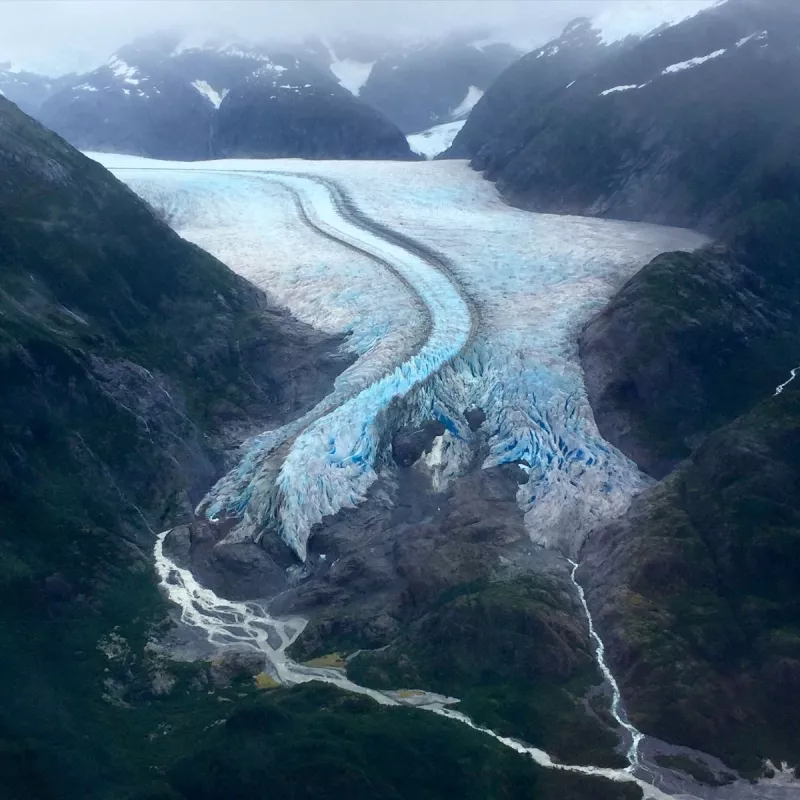by Agnieszka Gautier
Why should we be concerned with what happens in the Arctic? I asked Twila Moon this question and more on why changes in the Arctic matter—not just to those living in the Arctic, but to the world at large. Moon is the lead author of a commentary in Earth’s Future, which tackles the expanding footprint of unprecedented Arctic change.
Here are her answers:
1. What motivated you to write this commentary?
Too often these different elements—permafrost, sea ice, and land ice—are talked about separately. We want to give people a real sense that changes in each of them are connected to each other and to other parts of the Arctic system. And really that these changes are influencing people very far from the Arctic.
2. What changes are happening in the Arctic now?
The Arctic right now is warming on average at more than twice the rate of the world. Changes are happening very quickly in all parts of this environment: land ice is melting, permafrost is thawing, and sea ice is becoming thinner and covering less space. All three are deeply connected to each other. And they are all caused by the same fundamental behavior—our release of greenhouse gases.
3. How do these changes go beyond the Arctic?
For the most part, ocean levels rise far from where melting is actually taking place. That’s counterintuitive. Big ice like the Greenland Ice Sheet has so much mass that it acts like a magnet pulling water towards it. When you lose that ice mass, its pull weakens. And the other thing is when big ice mass begins to melt that allows the land beneath it to rise as the weight of ice comes off. So in the place you’re losing ice, you won’t see a lot of sea level rise. It will be in far off places like Los Angeles and Miami.
In other examples, as permafrost thaws, it releases carbon and methane into the atmosphere, which causes warming that influences other parts of the globe. When we lose sea ice, more heat enters the ocean because it’s darker than bright sea ice that bounces solar radiation off. The added heat in the ocean can be released to the air at other times or moved by ocean currents to other areas.
4. How are these changes affecting Arctic communities?
We see substantial problems with infrastructure as permafrost thaws. For instance, Alaska’s infrastructure damage from climate change over this century is estimated to be about $5.5 billion, and almost half of that is coming directly from permafrost thaw. With less sea ice protecting Alaska’s coastlines, coastal erosion is forcing some communities to relocate. But I want to emphasize that these changes are going beyond the Arctic to places like New York City and Los Angeles. Sea level rise and atmospheric warming intensify storms, increase surges, produce coastal erosion, and contaminate freshwater through salt water intrusions. For example, drinking water problems are already affecting Monterrey, Ventura, and Los Angeles counties in California. Sea cliff retreat is dramatic along the West Coast. And similar impacts are occurring worldwide, destabilizing economies and security.
5. The Arctic is so far away. Why should we be concerned with what happens there?
The Arctic is intrinsically tied to us through Earth’s physical systems. So often we’re just thinking about the weather in our local area. My weather in Montana seems really disconnected to the weather in Arizona or Alaska, but if we look at how air and ocean masses move around the planet, we can see that it is one connected system, one spinning globe.
6. Can we stop these changes? Why or why not?
Some changes are set to go. You can think of it like cooking an egg on a pan. You can turn off the heat, but the egg will continue cooking. The Arctic system is like that. Our past and current release of greenhouse gases will result in a certain amount of permafrost thaw, land ice loss, and sea ice melt. We can’t expect actions we take now to stop the changes already baked into the system. But at some point when I turn off the heat on my egg, the egg will eventually stop cooking. In contrast, if I leave the heat on, the egg will not stop cooking and will burn to a crisp. The same is true of the Earth system. By taking actions now we are making a dramatic difference in what happens in several decades and hundreds of years from now.
7. Climate change is such a big issue and seems to be getting bigger to the point that it is overwhelming. So what can an individual do? What can our governments do?
The important thing when it comes to individual action is that it raises your own awareness and provides an example to others to think about and act on. And even more fundamentally, each of us individually should ask those people who can make bigger changes to do that. So asking politicians—on local, state, and national levels—and business owners to make changes is critical because the very big changes we need require action on national and international levels. But the reason actions happen on national levels is because the public wants those actions to happen. Politicians are driven by votes and public opinion. Some of the most important things we can do don’t cost us any money like communicating with our elected officials and business owners, and saying, “Hey, this is important and we need to take action here and now.”
Further reading
Moon, T. A., I. Overeem, M. Druckenmiller, M. Holland, H. Hunthington, G. Kling, A. L. Lovecraft, G. Miller, T. Scambos, C. Schädel, E. A. G. Schuur, E. Trochim, F. Wiese, D. Williams, G. Wong. 2019. The expanding footprint of rapid Arctic change. Earth's Future: 07 March 2019, doi:10.1029/2018EF001088.



